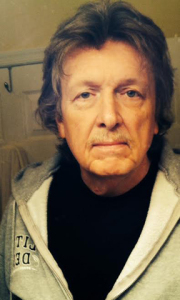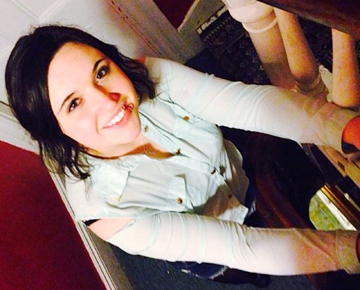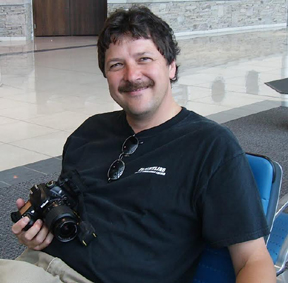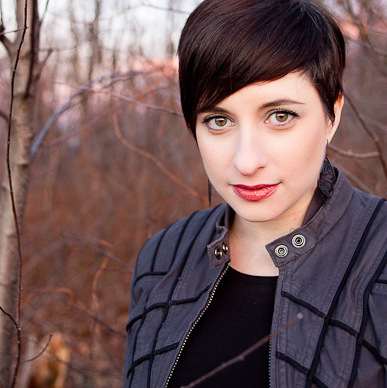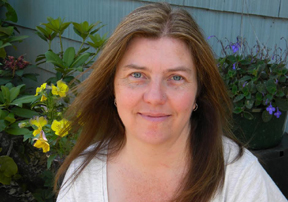
Laurie Easter’s essay “The Polarity of Incongruities” appears in the Winter 2015 CAREGIVERS issue of r.kv.r.y.. Writer Jennifer McGuiggan comments, “I love essays for the way they unearth, explore, and extrapolate meaning from both polarities and incongruities. Laurie’s essay grapples beautifully with the spectrum of joys and pains that punctuate our lives.” Jennifer interviewed Laurie via email.
Jennifer McGuiggan: The title of your essay, “The Polarity of Incongruities,” really drives the essay’s content. Many of the paragraphs start with the phrase “It’s when,” with the “it” referring to the title phrase. It’s only in the very last paragraph that you finally name the “it” within the essay itself. I’m wondering which came first: the title or the essay. In other words, I’m wondering about your process for this piece. Were you thinking about all of these interrelated events when you first sat down to write, or did their connections reveal themselves to you over time?
Laurie Easter: I’m so glad you asked this because before I submitted to r.kv.r.y, I actually had an editor from a different publication request that I change the title and restructure the piece into a more straightforward narrative. But I chose not to because I had very deliberately structured the essay in this manner, with the use of “It’s when…” referring back to the title. The title came before the actual writing of the essay, and indeed was the driving force behind the writing in terms of structure. But before I ever came up with the title, I spent quite a lot of time pondering the whole concept of incongruities and how they are happening in our lives every day, constantly, as though on a scale tipping the balance back and forth. This thought process went on for about eight months and is typical of the way I work. I think about things for a very long time, let them percolate, while driving or washing dishes or as I’m falling asleep. I’ll make notes, and eventually I get down to the writing. It’s not the same with every piece, but in this case the connections revealed themselves to me over time before the writing happened. The kind of cool thing about being slow in my production is that in the process life continues and inevitably more experiences happen that relate to the concept of what I’m thinking about writing, which gives me more material.
JM: The focus of r.kv.r.y is on recovery, on “obtaining usable substances from unusuable sources.” So much about your essay speaks to that theme. The people in the essay gain gifts of time, of peace of mind, of connection, of money—often from unexpected sources and sometimes unwanted circumstances. Did you write with this theme of recovery in mind, or did it emerge on its own?
LE: This is an interesting thing for me to think about because in general my essays are about intense issues—suicide, illness, death, grief—and I’ve always felt like everything I write is so dark; where is the light? The intensity of the pieces weighed so heavy in my mind that I couldn’t really see the recovery. What drew me to submit this essay to r.kv.r.y was this statement in the submission guidelines: “Our theme may be “recovery,” but that doesn’t mean all of our stories are about characters who are successfully recovering.” This really struck me because the nature of my essay is about that polarity where things constantly shift between positive and negative, and sometimes the space between those shifts can be mere hours, which doesn’t leave a lot of room for recovery in those moments, but, yes, over time recovery is possible in the full sense of the term, so the essay felt like a perfect fit with the journal. Now, with more perspective, I’m realizing that within these dark essays I’ve been writing, there is indeed some light and recovery. But to answer your question, evidently the recovery emerged on its own because I wasn’t fully aware of it until now!
JM: The theme of this issue of r.kv.r.y is “caregivers.” In your essay you explore your role as a caregiver (as a wife, a mother, and friend), but also as the one being taken care of (by your friend’s generosity after her death). Were you thinking about the concept of caregiving in these dual roles of both giving and receiving?
LE: No, I wasn’t thinking about caregiving at all when I wrote “Polarity.” I had other focuses in mind as I wrote. And when I submitted to r.kv.r.y, I didn’t submit to the “Caregivers” issue, just the general journal’s theme of recovery, so it was a surprise when I got editor Mary Akers’ email saying the piece was going into the “Caregivers” issue. Once I learned this, though, I definitely saw how it was a good fit due to the dual roles, as you mention, that are being explored in the essay. This is what I love about themes—how they can be interpreted, both in a common regard or broadly construed, and it is a subject I’ve been putting a lot of attention to lately as an assistant editor for Hunger Mountain. We’ve been curating several upcoming issues with themes of The Body, Masculinity, and Love, and it’s so interesting to read a submission that is submitted particularly for one theme and find that, in fact, it fits another theme perfectly. That is one of the joys of the submission and editing process when themes are involved—our many varied perspectives and interpretations.
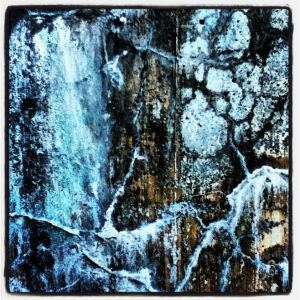
JM: As essayists, you and I both know the particular joys and griefs that come with writing stories from our lives. But for me, even when I write about painful events, I find more joy than sadness in the process of shaping my life into art. Do you feel that way, too?
LE: I’d like to say that I find more joy than sadness in the process, but I can’t say that’s really it for me. Often, writing is a joy. And sometimes it’s downright painful. But I’d say mostly what I experience when I craft art from painful events is more of a sense of discovery and completion. And relief. Sometimes when I start, I don’t know where I’m going or what I’m really trying to convey. Or I think I do, only to discover that what I thought was the focus of a piece really wasn’t at all. I love that discovery and learning process. And I love the sense of completion when an essay is fine-tuned and finished, probably because I’m so slow and many of my essays take so long to write! For me, the joy comes later when I connect with readers who find some spark within a piece that they can relate to or gives them comfort or helps with their own process of discovery.
JM: We have talked before about how perseverance and tenacity are so important to living the writing life, how we need those qualities to keep writing, keep revising, keep submitting. Reading your essay, it’s easy to see that tenacity is the key to so much about living itself. How do you practice perseverance in the face of setbacks (either on the page or off)?
LE: Well, I used to be horribly stubborn. And in my younger years that trait could create problems because, you know, it’s hard to get along in life when you’re stubborn. But as I’ve aged, that stubbornness has transformed into the useful quality of tenacity, which aids and abets my perseverance to keep going in the face of adversity.
I’m of the mind that you won’t get anything you want unless you ask for it; if you don’t make an attempt, you’ll never succeed; if you don’t submit your writing, it will never be published. It doesn’t mean if you ask or try, you’ll get what you want or succeed, but without trying you’re guaranteed not to. Maybe that’s why I’m so drawn to essaying, the definition of which is “to attempt or try.” You could say that, in essence, I’m essaying my way though life.
JM: What are you working on now? And where can people read more of your work?
LE: Lately it seems I haven’t been working on anything! I’ve been a bit absent from writing these past few months. But over the long term, I’ve been working on an essay collection that addresses themes of loss and grief, illness and (now I can say since this interview) recovery.
Most of my work has been published online. My website (www.laurieeaster.com) lists my publications with links to the online works. In print, my essay “Something to Do with Baldness,” which was recently nominated for a Pushcart Prize, appeared in the January 2014 issue of the wonderful micro-magazine Under the Gum Tree, an exclusively creative nonfiction publication. I also have an essay coming out in Chautauqua next June in their “Privacy and Secrets” issue.
Jennifer (Jenna) McGuiggan is a writer and editor based in southwestern Pennsylvania. Her essays have appeared in New World Writing, Connotation Press, Extract(s), and elsewhere. She is at work on a book of essays exploring the polarities of longing and belonging. One of those essays was chosen as a finalist for Prime Number Magazine’s 2014 creative nonfiction contest. You can find her online in The Word Cellar (www.thewordcellar.com).



